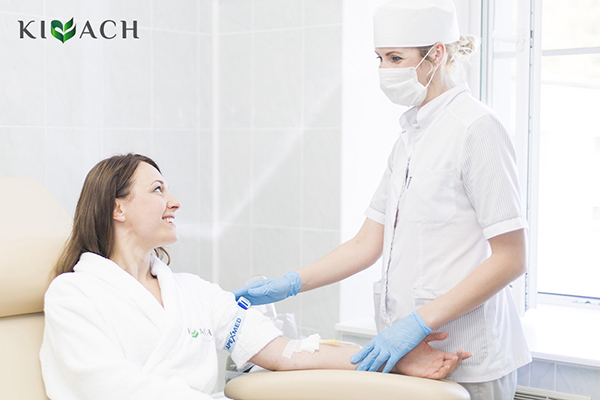What is ozone therapy?
Ozone therapy is a therapeutic technique of administration of therapeutic doses of ozone into body.
Indications
- chronic inflammatory processes (bacterial, viral, fungal);
- diseases of the gastrointestinal tract (peptic ulcer, gastritis, cholecystitis, chronic hepatitis, chronic colitis, anus fissures);
- cardiovascular system diseases (coronary heart disease, hypertension, heart rhythm disturbances, atherosclerosis);
- gynecological diseases (chronic adnexitis, colpitis, endometritis, sexually transmitted diseases);
- urological diseases (chronic prostatitis, chronic urethritis);
- neurological diseases (vegetative-vascular dystonia, migraine, discirculatory encephalopathy, peripheral nervous system diseases);
- skin diseases (neurodermatitis, eczema, hives, psoriasis, fungal and herpetic skin lesions, pyoderma);
- ENT organs diseases;
- diabetes mellitus type I and II;
- bronchial asthma, chronic bronchitis
- obesity
- cellulite
Results
- antimicrobial (ozone has a pernicious effect on virtually all types of bacteria, viruses, fungi and protozoa);
- anti-inflammatory (ozone is able to inactivate biologically active substances involved in any inflammatory process);
- analgesic (due to biochemical reactions of ozone oxidation reduces the intensity of pain syndrome);
- detoxification (ozone activates metabolic processes in liver and kidneys, thus ensuring neutralization and elimination of toxic substances from body);
- immunostimulating (by activating the cells of the immune system);
- strengthening of antioxidant protection;
- normalization of lipid peroxidation products balance level (ie, activation of systems that protect the body from harmful external and internal factors);
- improvement of blood circulation in small vessels, improvement of metabolic processes in organs and tissues;
- improvement of rheological blood properties (viscosity, fluidity), rejuvenating effect.
Ozone therapy techniques
Major ozonated autohemotherapy
Venous blood (50-150 ml.) is taken in a special container with anticoagulants (drugs preventing blood from clotting), afterwards ozone-oxygen gas mixture is administered into it. The contents of the container are carefully mixed for 3-10 minutes and then administered back into the vein.

Intravenous injection of ozonized saline
Sterile saline solution in the amount of 200-400 ml is pre-ozonated (ozone-oxygen mixture is passed through it in order to reach therapeutic ozone concentration in the liquid - 1-6 mcg / ml), and then administered intravenously to the patient.
Minor ozonated autohemotherapy
5-15 ml of venous blood is collected into a syringe containing 5-10 ml of an ozone-oxygen mixture. After careful mixing, the ozonated blood is re-administered into upper outer quadrant of the buttock.
Subcutaneous ozone-oxygen mixture administration
The technique is used in case of obesity, treatment of cellulite, for rejuvenating purpose.
Use of ozonized oil
Used for oral administration and for treatment gynecological diseases, ENT pathology.
Contraindications
- clotting disorder (increased coagulation: more than 9 min.).
- thrombocytopenia (decrease in platelets number in blood test).
- hemorrhagic or mixed stroke (in the anamnesis).
- acute alcohol poisoning.
- hyperthyroidism in the stage of clinical. manifestations (increased function of thyroid gland).
- acute myocardial infarction.
- allergic reaction to ozone.
- tendency to bleeding.
- menstruation.
Ozone therapy is well tolerated by patients, subjective sensations during ozone therapy are minimal and associated with minor pain reaction due to invasive autohemotherapy, intravenous and intramuscular injections,but in some cases, there is a possibility of reactions associated with the individual characteristics of each person.
Possible reactions
- when intravenous ozonized saline is applied, there may be a temporary compaction of the vein at the injection site or a hematoma that lasts for 5-6 days;
- during major ozonated autohemotherapy there may be a feeling of "heat" and reddening of the face that eliminates after the procedure;
- in a number of cases, patients note the phenomena of mild hypoglycemia (weakness, hunger);
- allergic reactions in the form of urticaria;
- with rectal insufflation of ozone, the feeling of abdomen swelling might appear, which lasts for approximately 10 minutes;
- during subcutaneous administration of ozone-oxygen gas mixture, pain during the injection was noted between patients, appearances of hematomas, others.

